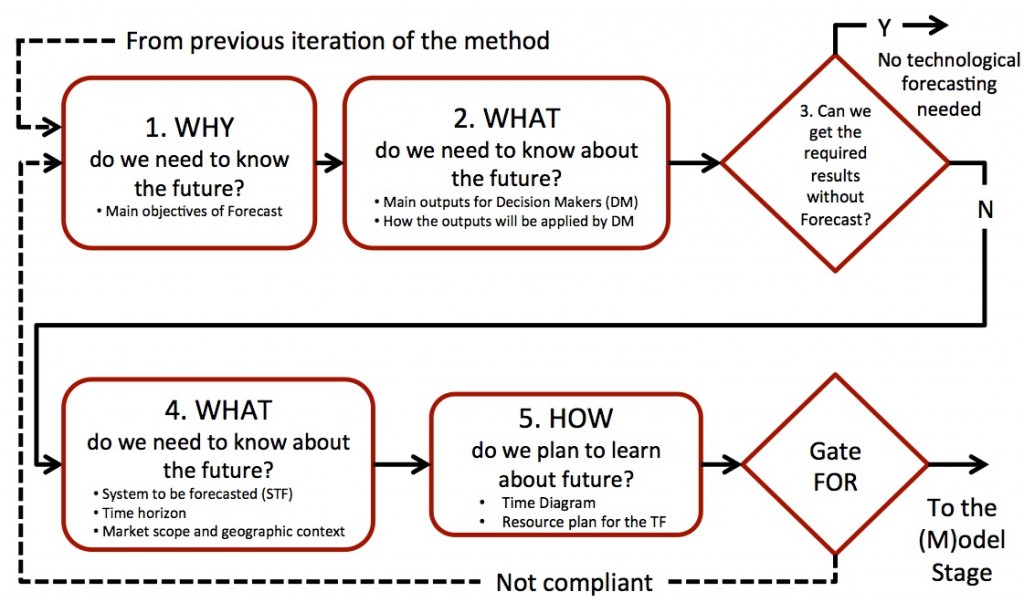Method
The main function of FORmulate stage is to set up the technology forecasting project: identify main objectives of the project, decide whether the project is a forecasting activity or a problem solving exercise for attaining defined objectives. Once the decision has been taken to initiate a technology forecasting project, forecasting questions are developed and detail plan of the project is outlined.
Ingredients
Knowledge
Members of the team should preferably have 3-5 years of applied design experience of new technologies.
Time
2-3 working sessions (4h each) within 10 working days.
Material
Descriptions of existing industrial processes (alternative or competitive).
People
Core team: 1-2 analysts + 2-3 Technology & Market specialists.
(1 analyst is assigned as a leader to coordinate sessions and is responsible for the delivery of reports and presentations)
Extended team: 1-2 User& Beneficiaries.
Tools
Introductory presentation.
Structured interview.
Panel discussion.
Templates for presentation and report.
Software
Office software available for all participants of project (e.g. word processors, spreadsheets, for slides, pdf converters). Collaboration software to support VoIP meetings (necessarily including screen sharing features, preferably with recording option).
Step by Step Instructions
- To discuss and elaborate main objectives of the study as target technology (engineering system). (See Step 1 of FORFOR = FORmulate Stage)
- Identify expected results of the project and how the results will be applied. (See Step 2 of FORFOR = FORmulate Stage)
- Decide about the question: Can we achieve the required results without Forecast? (Yes/No) (See Step 3 of FORFOR = FORmulate Stage)
- If the answer to the question in instruction 3 is Yes, then classify and proceed with the project as a problem solving task.
- If the answer to the question in instruction 3 is No, then proceed with the project as a technology forecasting project.
- Prepare answers to the following questions: What is the system to be forecasted (STFSTF = System to be forecasted )? What is the time horizon for the forecast? What is the market scope and geographic context? (See Step 4 of FORFOR = FORmulate Stage)
- Prepare a detailed project plan. The plan of the project consists of:
- Human resources: List of beneficiaries of the results of TF Add a Tooltip Text, list of core team members, list of support specialists and a list of invited professionals.
- Material resources: Travel funding, communication software, data sources, necessary sources of information (e.g. books, journal subscriptions).
- Plan: detailed description of time and content of TF Add a Tooltip Text project (Gantt chart recommended) (See Step 5 of FORFOR = FORmulate Stage).
Tips
➔ For detailed tips on running sessions, refer to Best practices for conducting working sessions
➔ Limit the number of questions for specifying the formulated objectives:
- Define a time horizon for the forecasts (e.g. “How will the main parameters change over the next 10-20 years?”).
- Specify a geographical area for the forecast (e.g. European and Middle-East market).
➔ The number of members in the core team will be preferably between 3 and 5 and all core members should be available for all sessions.
Suggested reading
Haugan, G. T. (2002). Project Planning and Scheduling, Management Concepts Press, ISBN:9781567261363.
Conchúir, D. Ó. (2011). Overview of the PMBOK® Guide: Short Cuts for PMP® Certification, Springer, ISBN: 9781935589679.
v.2


